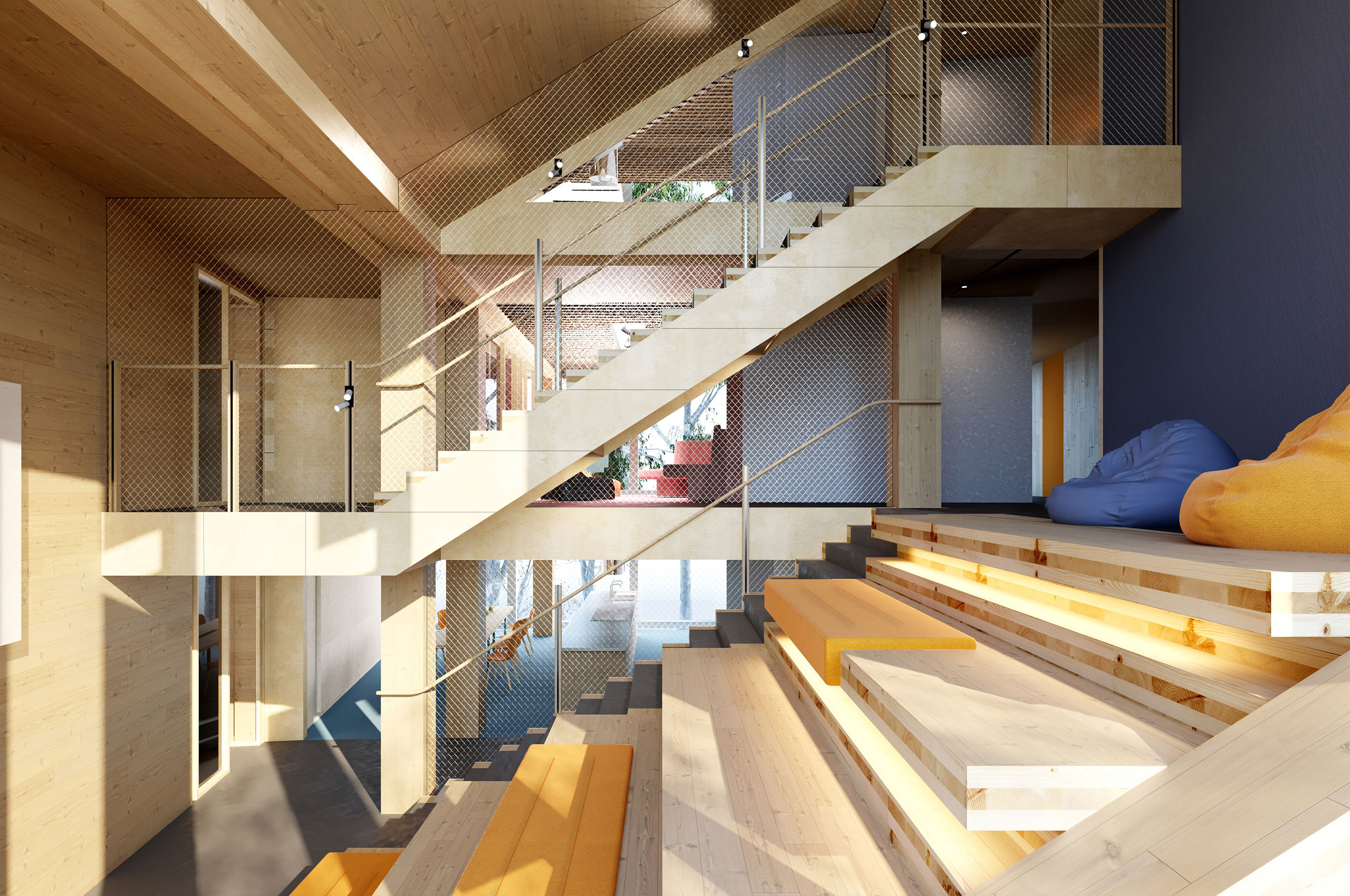Why Cross Laminated Timber is on the rise in the construction industry

Cross Laminated Timber (CLT) is an emerging renewable construction technology that is fast becoming the new concrete of the construction industry.
But what exactly is CLT and why are architects and builders opting for it over traditional building materials?
“When you think of Cross Laminated Timber, think of Jenga,” says Kimberley Wilkinson, La Trobe University Project Director for the new $100 million, 624 bed student accommodation project.
“Cross Laminated Timber is essentially an engineered wood product. It’s made by gluing together pieces of timber to make a larger slab – this is like the base layer in Jenga. You then add the second ‘Jenga’ layer or slab, but rotate it 90 degrees. Once you have three or five of these ‘Jenga’ slabs, they are laminated together and you end up with one mass timber panel which is known as Cross Laminated Timber.”
The project is the second largest timber project by mass in Australia with around 4,100 cubic metres of CLT being used in total.
In addition, the two apartment buildings at La Trobe University’s Melbourne (Bundoora) Campus have been designed with sustainability at the forefront. The arc-shaped design was chosen for its ability to complement the existing environment at the campus. With La Trobe already having a six-star Green Star Communities rating, creating a modern and innovative building that showcased La Trobe’s continued commitment to sustainable building design and construction was essential.
So, if we’re chopping down trees to produce CLT, how is it sustainable and why is it fast becoming the better choice in the building industry?
Danielle Savio, Multiplex Project Manager, says there is a misconception that timber buildings destroy forests.
“Timber is a sustainable product when sourced from sustainable, fast-growth forests. About 20% of sustainable plantations are currently used each year – therefore we have the capacity to increase our use of timber without causing detriment to these plantations,” Danielle said.
While the use of CLT might be on the rise in Australia, this doesn’t mean you can pop down to your local Bunnings store and pick up some for your latest weekend project.
“The CLT we are using on our new student accommodation is made from Austrian Spruce, grown in Alpine conditions and sourced from a timber supplier in Italy. This is because the mass timber industry is still developing in Australia. Hopefully when it reaches scale more timber projects will come on line using locally sourced timber.
“Once the timber arrives on site, it gets assembled by local builders, wired up and plumbed by local sparkies and plumbers, as well as many other local and skilled trades people. On any given day, there can be up to 120 people working on site and at peak times we’re expecting around 250 workers on the job,” says Kimberley.
In addition to being sourced sustainably, timber naturally stores carbon and has a low ‘embodied energy’. This means that the combined energy to produce CLT in Europe and ship it to Australia is still less than the energy it takes to locally produce materials like concrete.
CLT also has other sustainable benefits over concrete – it’s a good insulator as it resists heat, it can be simply disassembled and reused for future projects, and more significantly, it produces less greenhouse gas emissions.
“By building our structure out of timber, we’ve calculated that we are producing 76 per cent less greenhouse gas emissions than if we had of opted for a concrete structure. This is like taking 1,600 cars off the road for an entire year,” said Kimberley.
This is all good news for La Trobe University, who in 2019 announced it will be Victoria’s first University to be net zero carbon emissions, planning to achieve this by 2029 with the regional campuses due to be carbon neutral by 2022.
But it doesn’t stop there - CLT also has other advantages when compared to traditional construction technologies.
Danielle said that CLT is quick to install and the fit-out works can occur much quicker behind the building structure.
“It also goes together like a big jigsaw puzzle which makes for very accurate building, it’s lighter in weight - meaning that building foundations are smaller which can reduce project costs – and it’s air tight.
“Not only that, timber is biophilic – which means that people connect better with it as it’s a natural material that promotes a sense of warmth and calmness, which is why architects love it,” said Danielle.
It’s no wonder that this evolving construction technology is on the rise in Australia, just like La Trobe’s Student Accommodation project. Find out more about the project at www.future-city.latrobe/student-accommodation-project
December 2019
